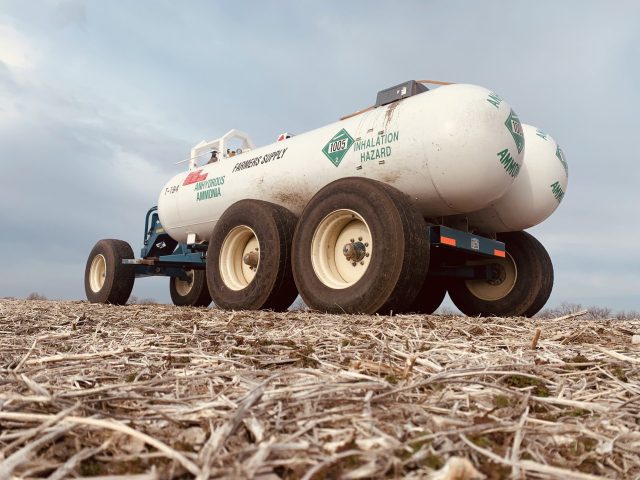November 27, 2025 | 22:07 GMT +7
November 27, 2025 | 22:07 GMT +7
Hotline: 0913.378.918
November 27, 2025 | 22:07 GMT +7
Hotline: 0913.378.918
for the first two rounds of a new grant program to add innovative domestic fertilizer production capacity.

Photo: IARN Stock
USDA also announced the first $29 million in grant offers under the first round that focused on projects that can come online in the near term. The grants will help independent businesses increase production of American-made fertilizer, which will spur competition, give U.S. farmers more choices and fairer prices and reduce dependence on unreliable foreign sources like Russia and Belarus. Vilsack made the announcement at the 2023 Commodity Classic, in Orlando, Florida, the same event where he first unveiled the program a year earlier.
“I know that increased costs for fertilizer and other inputs have put a strain on farmers and cut into the bottom line,” Vilsack said. “By expanding the production of domestic fertilizer supplies, we can grow independent local businesses, bring production and jobs to rural communities and support fair prices for our farmers.”
The Biden-Harris administration’s Fertilizer Production Expansion Program is part of a government-wide effort to promote competition in agricultural markets. The program supports fertilizer production that is independent, made-in-America, innovative, sustainable and farmer-focused.
Vilsack made the initial announcement to dedicate $250 million at the 2022 Commodity Classic, the same event where he is making the first awards a year later. From the start, it has been clear there is strong demand for the program and even before applications were being taken, President Joe Biden directed USDA to increase the program to $500 million at a farm visit in Illinois in May 2022. This fall, demand for the program was immediately evident by the sheer number, range and diversity of applications. More than 350 applications came in from applicants of every size and business model, including cooperatives, Tribal communities, female-owned companies and public bodies. These applicants requested between $1 million and $100 million for projects across 47 states, Puerto Rico and the Virgin Islands.
In all, $3 billion in funding was requested for projects that could increase production immediately for Crop Years 2023 and 2024, as well as bolster long-term availability of U.S.-produced fertilizer. Projects were proposed for both fertilizers and nutrient alternatives, and represented different technologies, including composters, complex manufacturing, farm supply blenders and distributors.
Awards
The first round of FPEP was focused on projects that could increase fertilizer capacity for the 2023 or the 2024 crop year, to prioritize projects with near-term impact. From the High Plains Journal area:
(hpj)

(VAN) A new study reveals how the simultaneous effects of ocean acidification, salinity and loss of oxygen are making the world more fragile.

(VAN) Hopes are growing that the creation of the first 3D turkey gut model could be a turning point in the battle against the virulent blackhead disease.

(VAN) Tyson, America’s biggest meat supplier, plans to shutter one of its largest beef processing plants as the industry continues to struggle with low cattle supplies and political pressure from Washington.

(VAN) New FAO study shows how digital solutions are empowering farmers and fishers to prevent losses and build resilient agrifood systems.

(VAN) Brazil's COP30 presidency pushed through a compromise climate deal on Saturday that would boost finance for poor nations coping with global warming but that omitted any mention of the fossil fuels driving it.

(VAN) Poultry farmers in the UK have been warned that they could face one of the worst winters yet for bird flu.

(VAN) Prices of main-crop paddy have risen sharply, with jasmine rice hitting 16,100 baht per tonne — the highest level in years.